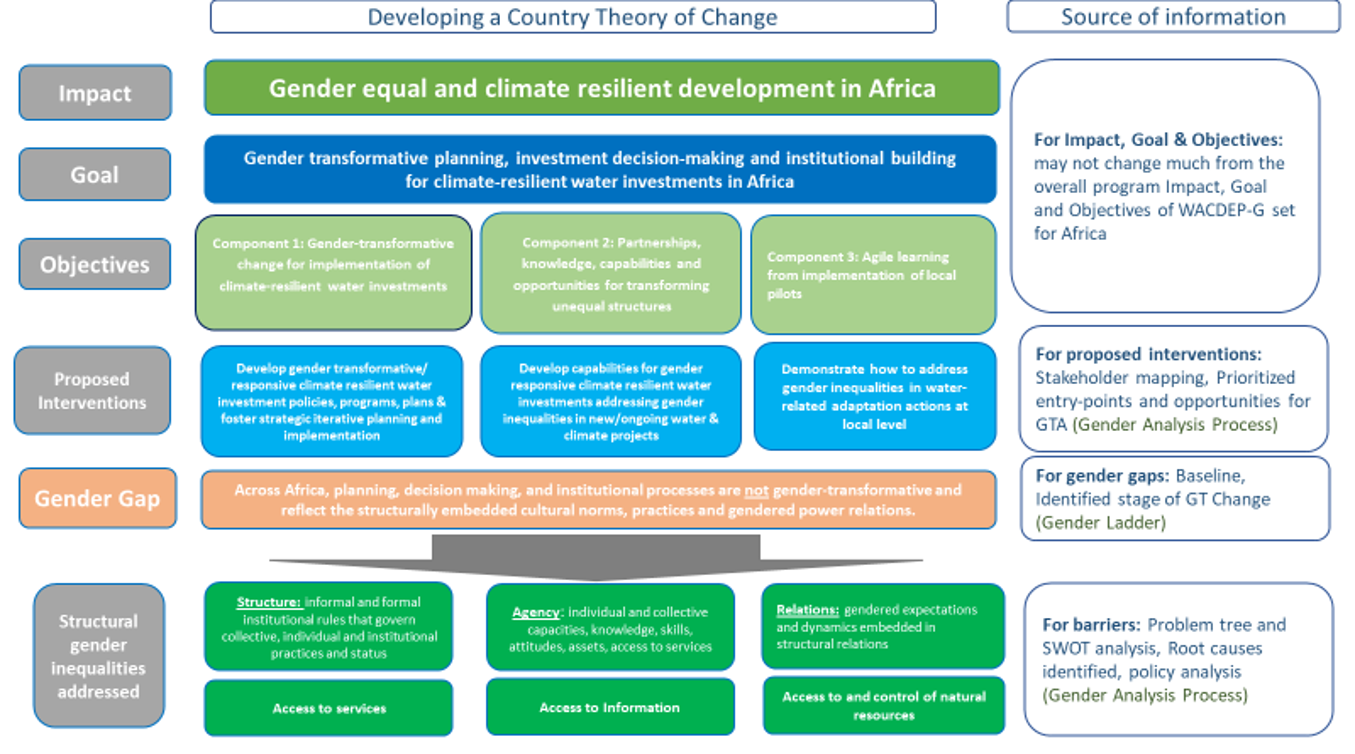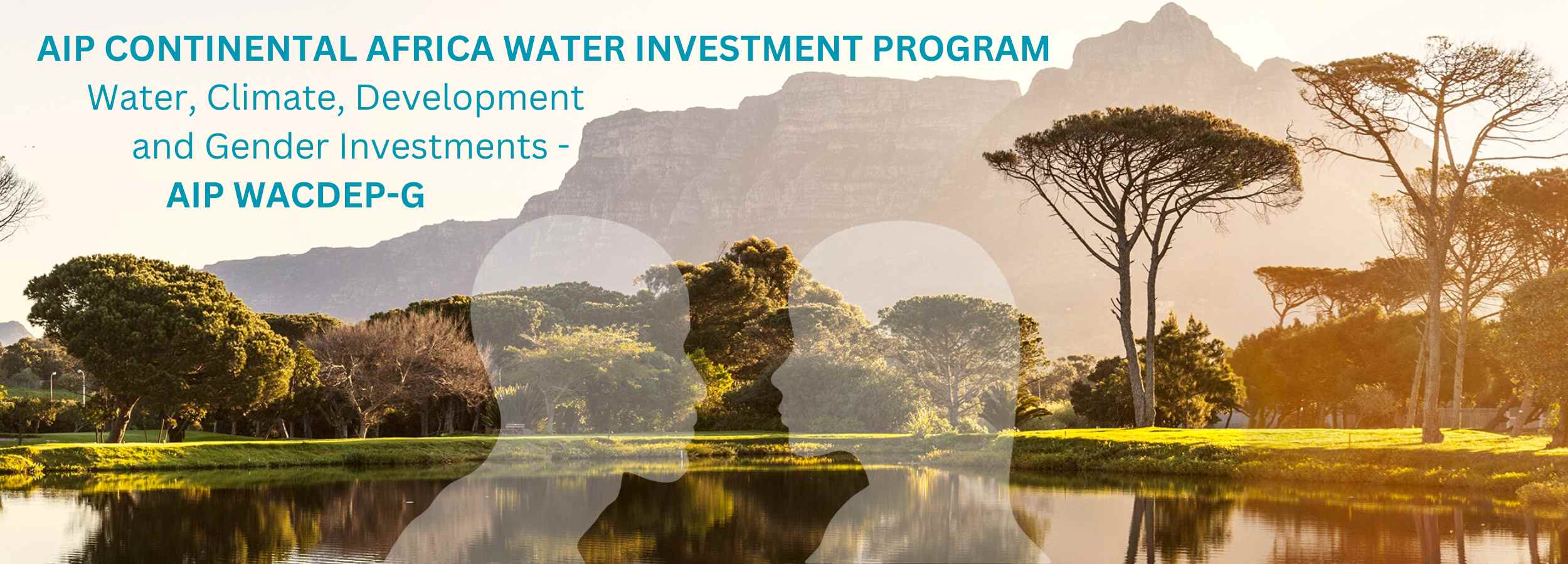Gender equality is essential for the water sector to develop and to contribute effectively to the sustainable development goals more broadly, delivering water services across sectors and moderating competing demands for water. However, across the African continent, investment and institution building through water and climate change adaptation projects are typically not gender responsive or gender transformative. Gender inequality remains and continues unabated despite high level declarations to the contrary at the pan African level. Unless gender equality is specifically targeted at the systemic level, the fast-growing initiatives towards and investments in water infrastructure on the continent will significantly exacerbate gender inequalities.
The WACDEP-G Programme (Water, Climate, Gender and Development Programme) aims to address these challenges at continental level across Africa, being part of and functioning within the enabling political context of the African Water Investment Programme (AIP).
It is implemented by Africa Governments, Africa Union Development Agency-NEPAD and the Africa Ministers’ Council on Water (AMCOW), Regional Economic Communities, River Basin Organisations, Regional Water Partnerships, Country Water Partnerships, women organisations, International Water Management Institute (IWMI), UN WOMEN, Global Water Partnership and others.
Goal and Objectives
The goal of the AIP-WACDEP-G is to build capacity to ensure that the preparation, development, design, governance, and management of ongoing and new climate resilient water infrastructure investments, institutions and job creation interventions strategically advance gender equality.
The overall objective is to transform gender inequalities at scale by promoting gender-transformative planning, decision-making and institutional development for climate resilient water investments in Africa.
AIP WACDEP-G is expected to be a ‘game changer’ across the water sector and beyond, addressing gender inequalities across Africa by taking a gender-transformative approach to development at the water and climate interface.
The envisioned system-wide transformation will be achieved by influencing country-wide processes for water infrastructure investments in 10 countries and 5 river basins across Africa. The programme is expected to support and benefit 3.6 million people over the course of 6 years, and to influence $1 billion of gender equal and climate resilient investments from government and private sources.
Theory of Change
Across Africa, planning, decision making, and institutional processes are not gender transformative and reflect the structurally embedded cultural norms, practices and gendered power relations. AIP WACDEP-G takes a gender transformative approach toward strengthening individual and collective capacities, agency, power dynamics, institutions and structures that would otherwise serve to reinforce gendered inequalities. The Gender Transformative Approach (GTA) examines 3 levels of change:
Structures level: includes the informal and formal institutional rules that govern collective, individual and institutional practices, such as environment, social norms, recognition and status. The change aims to enable the underlying causes of gender-based inequalities and transforms harmful gender norms, roles and relationships to be translated in water and climate policies.
Relations level: cover the expectations and cooperative or negotiation dynamics embedded within relationships between people in the home, market, community and groups and organisations. The GTA aims to Strengthen networks and partnerships, to improve regulations for a better access to control of water, land, information, services and to capacitate the institutions that are working on CRWI initiatives.
Agency level: involve individual and collective capacities (knowledge and skills), attitudes, critical reflections, assets, actions and access to services. The GTA aims to empower woman at this stage through trainings.
Taking a gender transformative approach means to go beyond addressing the “symptoms” of gender inequality; instead, the programme will tackle the social norms, attitudes, behaviours, and social systems that underlie them.
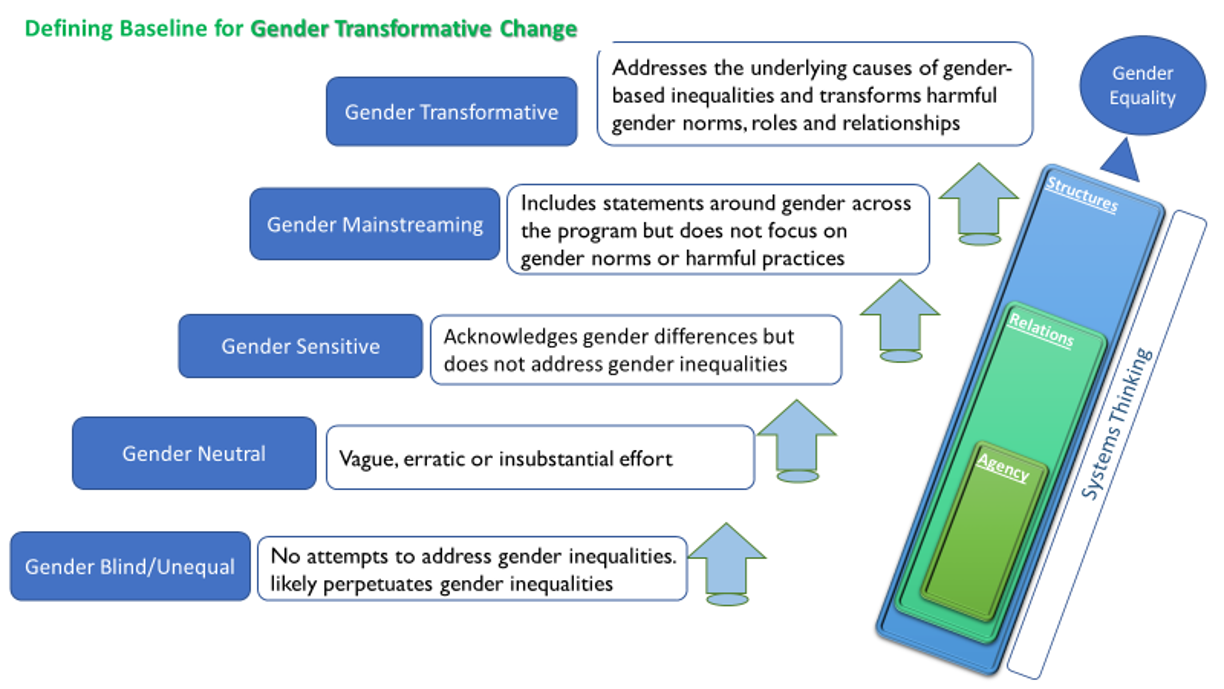
To support Africa’s Agenda 2063 and global commitments under Agenda 2030 and the Paris Climate Agreement – decisions on planning, on institution building and on investments that relate to water resources must take a transformative approach towards gender inequalities. Water is a connecting thread between gender equality, climate adaptation, resilience and other dimensions of development.
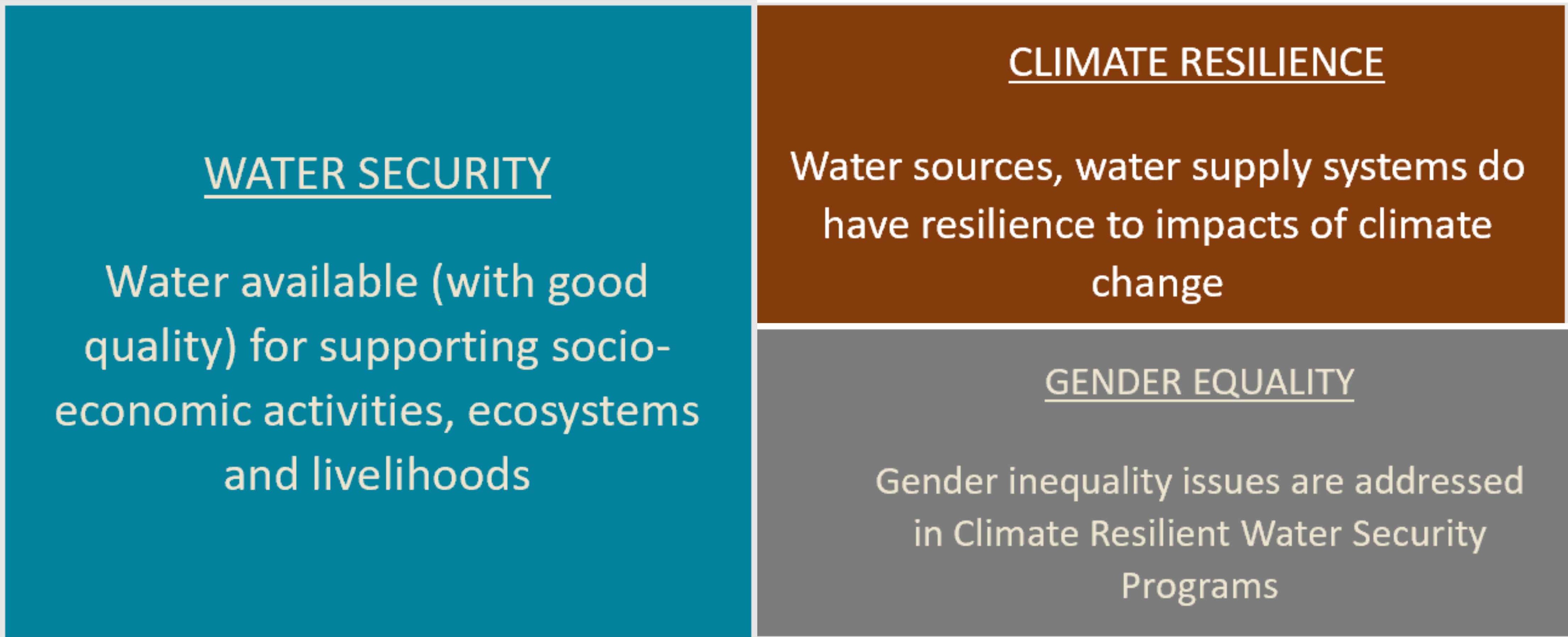
In most African countries, there is now a unique opportunity to design and shape institutional and infrastructure investments in a way that they will transform the gender dimensions of development. Ongoing water and climate change investments may well contribute to positive gender-specific development outcomes, for instance, by improving access to domestic water supply and thereby reducing time and labour burdens for women. However, without a gender-transformative vision, the very same investment programs risk to intensify and ferment already existing inequalities across beneficiary groups and societies more broadly.
Implementing the 3-level GTA theory of change, the AIP WACDEP-G is structured in the following manner:
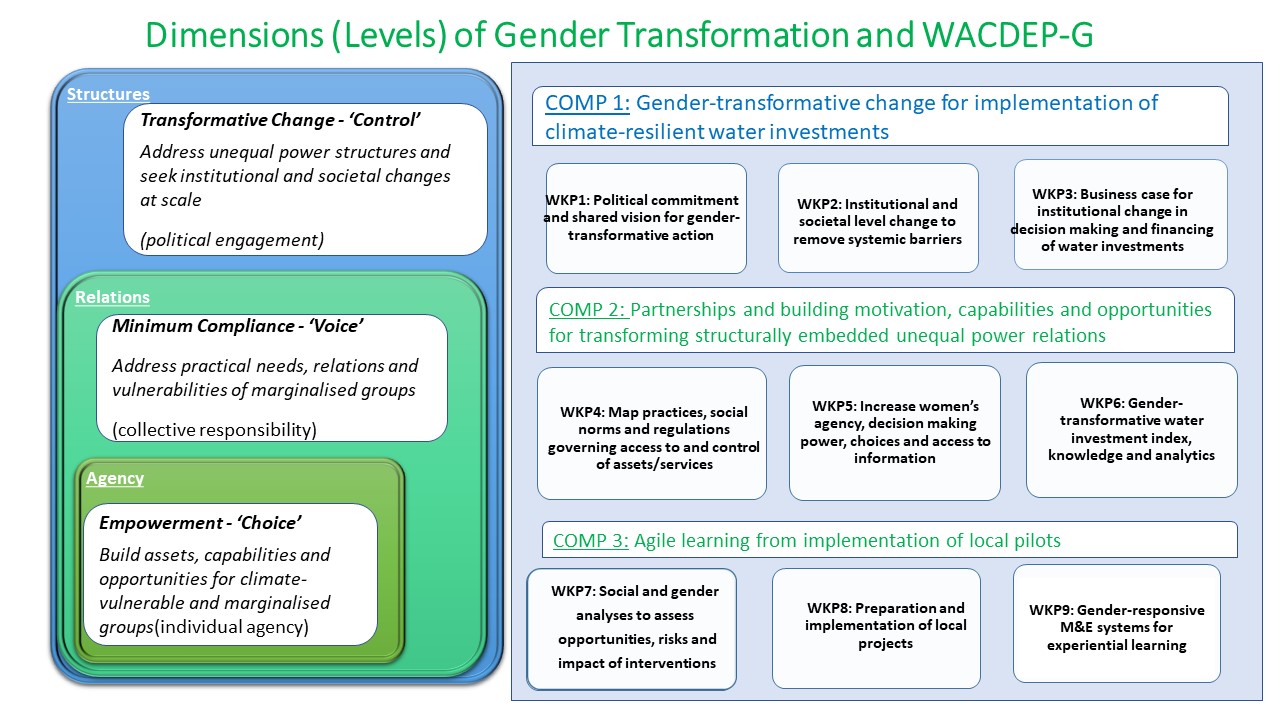
AIP-WACDEP-G is closely aligned with and anchored to global development frameworks. Besides embedded in the AIP, the adaptation aspects of the Paris Agreement for example are influencing the agenda, including the adaptation components listed by countries in their Nationally Determined Contributions (NDCs) together with the call to develop National Adaptation Plans (NAPs). The UN’s progress assessment on implementing SDG6 is another critical entry point for the programme, in particular the maturity of countries in implementing Integrated Water Resources Management, as set out in SDG6.5.1 and the gender targets in particular. Furthermore, the programme is expected to complement national and cross-country efforts towards adaptation and mitigation measures by accessing climate financing, including Green Climate Fund options.
